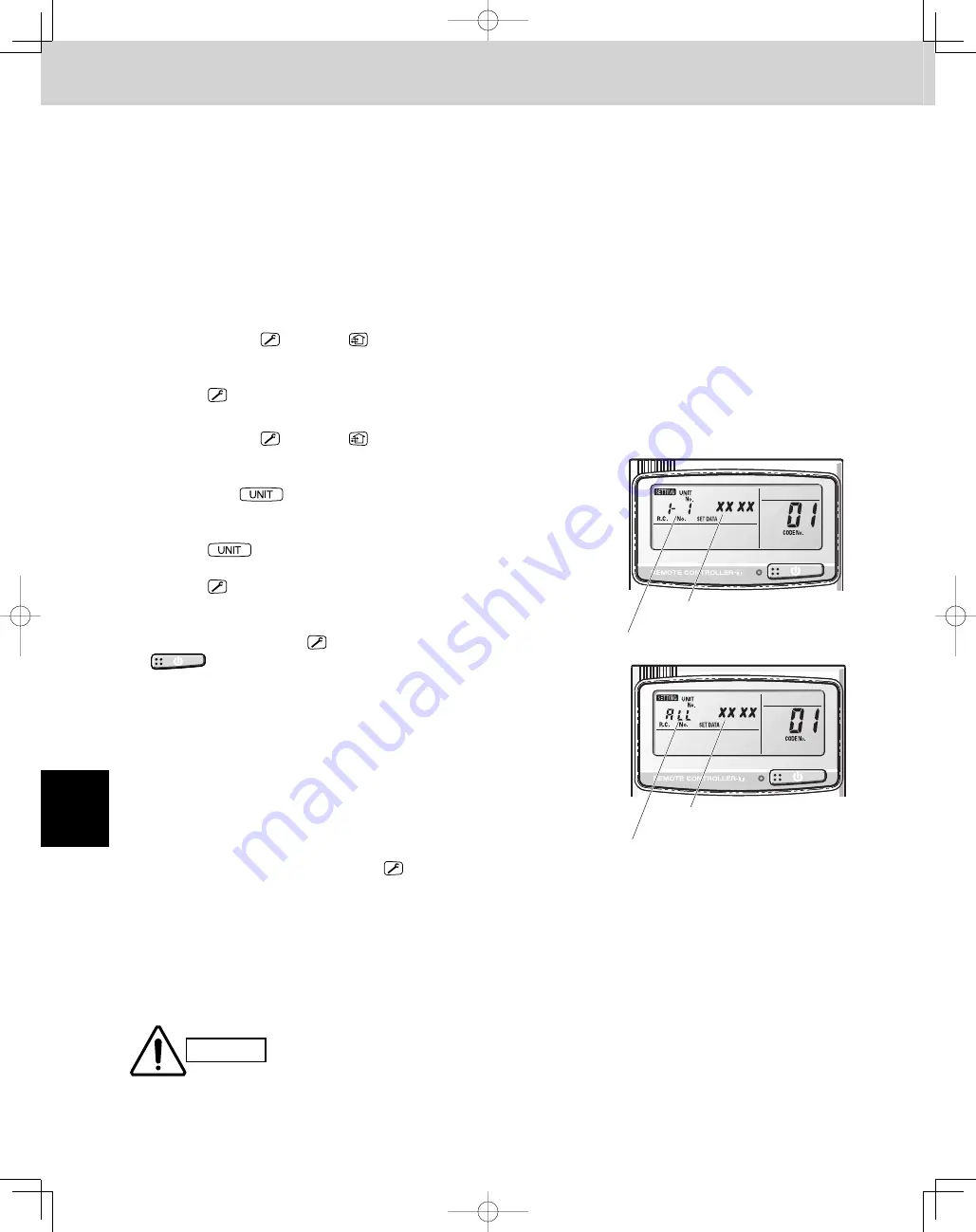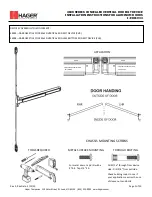
Test Run
5
- 12
8
7
6
5
4
3
2
1
4. Auto Address Setting / 5. Remote Controller Test Run Settings
6. Caution for Pump Down
Request concerning recording the indoor/outdoor unit combination Nos.
After automatic address setting has been completed, be sure to record them for future reference.
List the outdoor main unit system address and the addresses of the indoor units in that system in an easily visible location (next
to the nameplate), using a permanent marking pen or similar means that cannot be abraded easily.
Example: (Outdoor) 1 – (Indoor) 1-1, 1-2, 1-3… (Outdoor) 2 – (Indoor) 2-1, 2-2, 2-3…
These numbers are necessary for later maintenance. Please be sure to indicate them.
Checking the indoor unit addresses
Use the remote controller to check the indoor unit address.
<If 1 indoor unit is connected to 1 remote controller>
1. Press and hold the
button and
button for 4 seconds or longer (simple settings mode).
2. The address is displayed for the indoor unit that is connected to the remote controller.
(Only the address of the indoor unit that is connected to the remote controller can be checked.)
3. Press
the button again to return to normal remote controller mode.
<If multiple indoor units are connected to 1 remote controller (group control)>
1. Press and hold the
button and
button for 4 seconds or longer
(simple settings mode).
2. “ALL” is displayed on the remote controller.
3. Next, press the
button.
4. The address is displayed for 1 of the indoor units which is connected to the remote
controller. Check that the fan of that indoor unit starts and that air is discharged.
5. Press
the
button again and check the address of each indoor unit in se-
quence.
6. Press
the button again to return to normal remote controller mode.
5. Remote Controller Test Run Settings
1. Press the remote controller
button for 4 seconds or longer. Then press the
button.
“TEST” appears on the LCD display while the test run is in progress.
The temperature cannot be adjusted when in Test Run mode.
(This mode places a heavy load on the machines. Therefore use it only when per-
forming the test run.)
2. The test run can be performed using the HEAT, COOL, or FAN operation modes.
Note
: The outdoor units will not operate for approximately 3 minutes after the
power is turned ON and after operation is stopped.
3. If correct operation is not possible, a code is displayed on the remote controller
LCD display.
(Refer to “Table of Self-Diagnostic Functions” and correct the problem.)
4. After the test run is completed, press the
button again. Check that “TEST” disappears from the LCD display. (To prevent
continuous test runs, this remote controller includes a timer function that cancels the test run after 60 minutes.)
*
If the test run is performed using the wired remote controller, operation is possible even if the cassette-type ceiling panel has
not been installed. (“P09” display does not occur.)
6. Caution for Pump Down
Pump down means refrigerant gas in the system is returned to the outdoor unit. Pump down is used when the unit is to be
moved, or before servicing the refrigerant circuit. (Refer to the Service Manual)
CAUTION
This outdoor unit cannot collect more than the rated refrigerant amount as shown by the
nameplate on the back.
If the amount of refrigerant is more than that recommended, do not conduct pump down.
In this case use another refrigerant collecting system.
Number changes to indicate which
indoor unit is currently selected.
Indoor unit address
Number changes to indicate which
indoor unit is currently selected.
Indoor unit address
TD831158-00̲3WAY̲VRF̲SYS.indb 12
TD831158-00̲3WAY̲VRF̲SYS.indb 12
2012/01/24 10:54:21
2012/01/24 10:54:21
Summary of Contents for U-72MF1U9
Page 118: ...Section 8 TENTATIVE ...















































